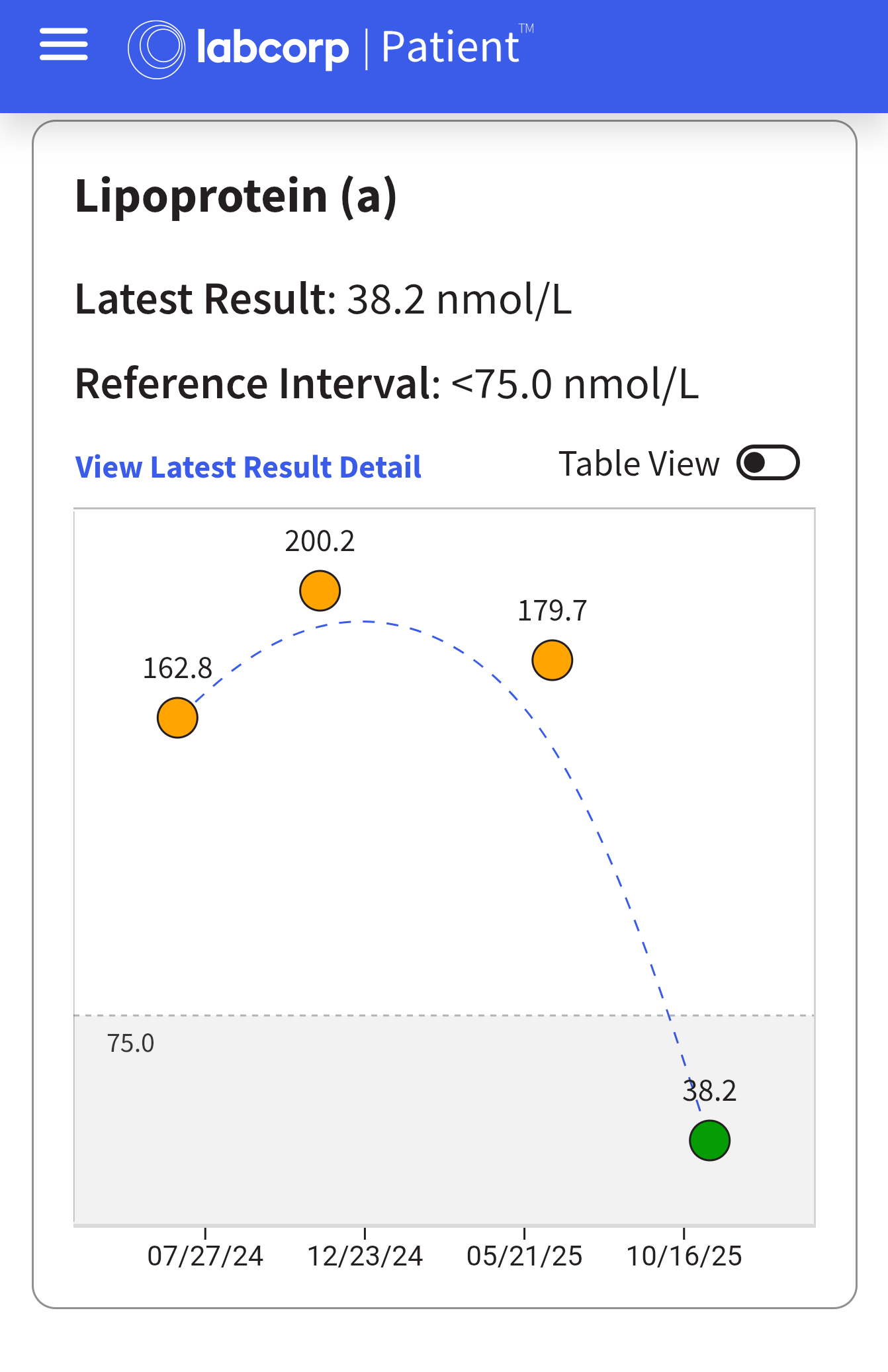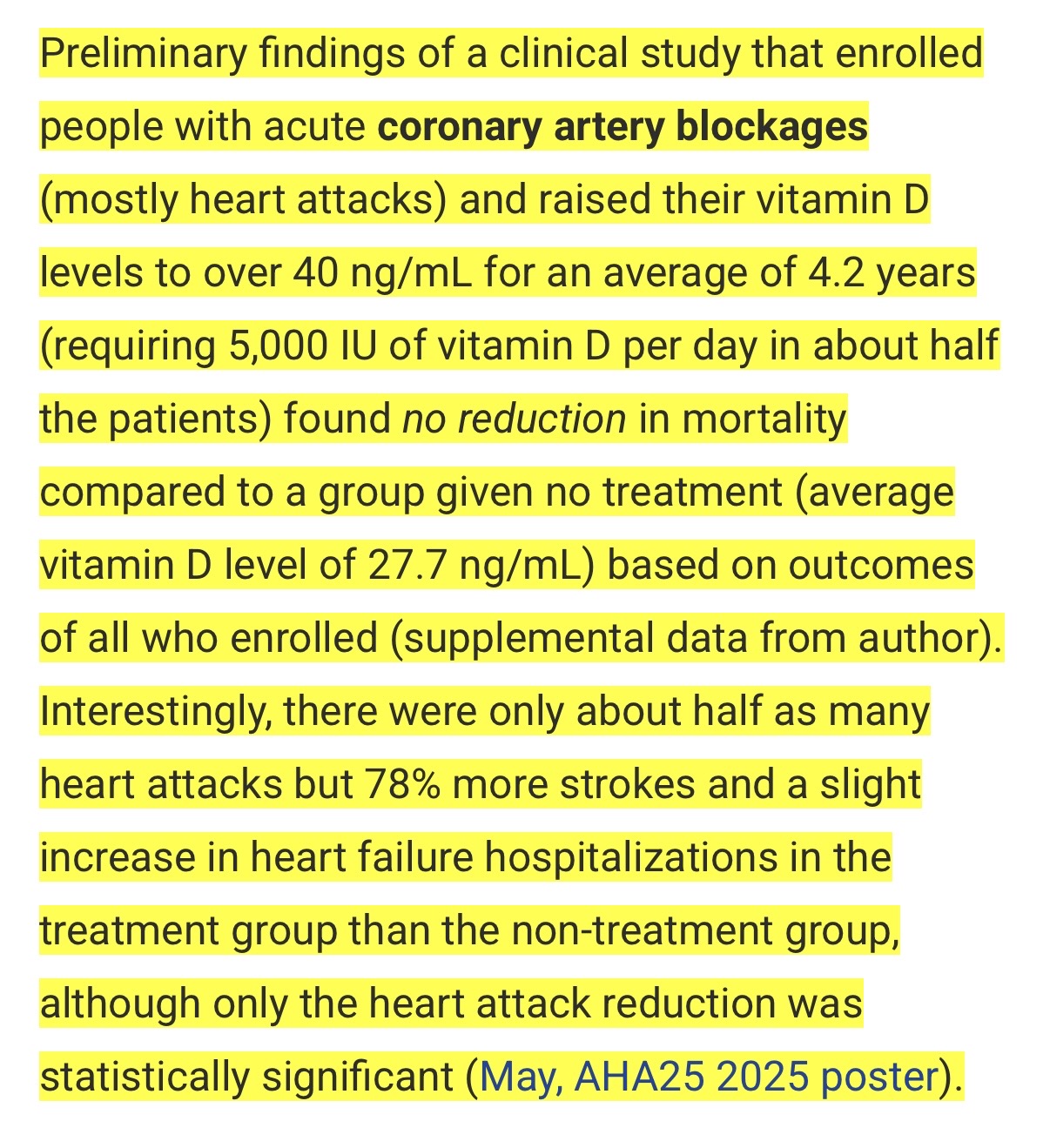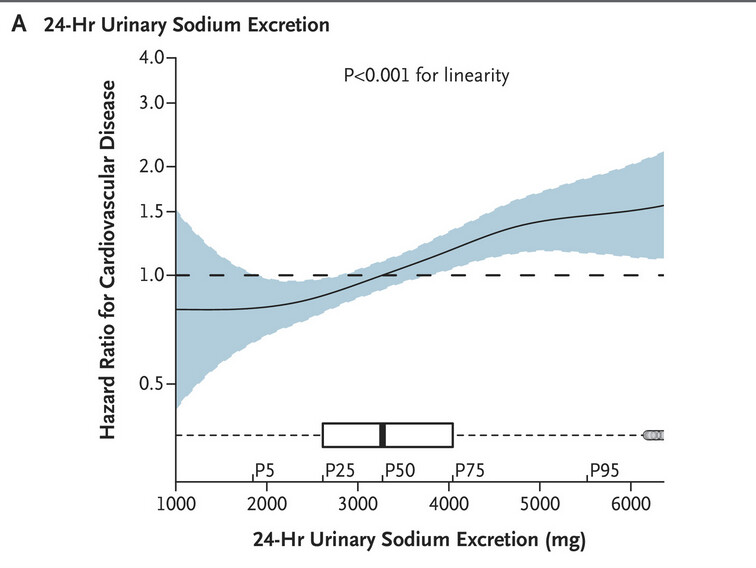Matt Kaeberlein debated him on that and I thought Matt made way better points. Seems kind of silly to just ignore vitamin D testing when too many studies only focus on people taking D supplements without measuring D levels. Fortunately, this study did that. I use Brad’s Microvitamin+ powder and wished he would raise the 1000iu vitamin D dose in there to at least 2000iu.
I haven’t checked ApoB since I started the Nexlizet, but I will check it within the next couple of weeks. I was on Brillo-EZ for years, from Jagdish.
Right now I’m eagerly awaiting Lp(a) results from LabCorp to hopefully confirm I truly went from 200 down to less than 50 rather than Quest’s assay being bugged.
Yes - but his argument was really on a population level, for a national healthcare system. It may not make financial sense at that level, but on a personal level I have a bias towards measuring and testing. For $10 (or so) its a small cost to know where I stand on Vitamin D, as more and more research suggests the level is important.
It’s from Sun Pharma, the largest pharmaceutical company in India. But recently one of their plant didn’t meet FDA requirements: https://www.reuters.com/business/healthcare-pharmaceuticals/us-fda-deems-sun-pharmas-halol-plant-not-compliant-with-its-manufacturing-rules-2025-09-09
It’s still concerning if their drug is useless…
And the new results from LabCorp just came in. It’s definitely not a bug in Quest’s assay, so it appears I’ve made an important discovery with IGF-1 LR3 and Lp(a).
WHOA!!! Ok, so this is overwhelming info!
IGF 1 is pro aging and best to keep it low
But in taking it, you DRAMATICALLY lowered your Lp(a)
Everyone, please discuss this!!!
@Davin8r also, to the best of your knowledge, would this be a permanent effect, or do you think you need to continuously raise your igf 1 ?
EDIT: do you think this could be related to your new low LDL and perhaps it’s not branded nexilet ?
Just thought I’d direct people to your post about the IGF 1 LR3.
No, I started the Nexlizet after doing the first experiment w/LR3 and Nexlizet should have negligible effect on Lp(a) anyway.
I do want to emphasize that I do NOT recommend people run out and start injecting IGF-1 LR3. It hasn’t even passed phase 1 clinical trials, much less phase 2 or 3, and that’s assuming the LR3 you buy is pure and uncontaminated. We have safe and even more effective Lp(a) drugs coming out within the next couple of years. This was just some self-experimentation proof-of-concept work, and I have a higher than normal risk tolerance for this kind of thing.
I was trying to ask the opposite, meaning…if lr3 could lower your lp(a), could it have lowered your LDL . I assume you’ve already ruled that out.
Thx for the warning, and I wouldn’t run out and try this because I’m cautious about doing anything to increase the risk of cancer, and I’d want to understand it more.
Having said that, if this could potentially work with a very short term therapy and be lasting, then it’s something I might talk to my doc about….not that he would approve of me taking a research peptide, but he knows I do and he’ll at least go over things with me. But if this becomes worth considering, I wonder it’s it’s after a whole body MRI and a Galleri blood test.
Oh good question, that is indeed a possibility. I’ve stopped the LR3 and will be monitoring Lp(a) and my other lipids every 2 weeks to see how long it takes it to come back to my “normal” (i.e. high), so we’ll see if LDL/ApoB trends up as well.
Brillo-EZ from Sun Pharma certainly worked for me. I was on atorvastatin 40 mg tablets for years, and it kept my LDL in the 70-80 mg/dL range. My doctor thought that was just fine and would not raise the dose or prescribe any adjunct meds like Brillo. I bought Brillo-EZ from Jagdish and paired it with atorvastatin, and it lowered my LDL cholesterol to below 40 mg/dL.
Stratifying cost benefit by purchasing power is an interesting and under-discussed aspect of precision medicine. I sometimes wonder if all the DTC lab test verticals and DTC specialist verticals are not just using direct pay to side-step insurance but also innovating on the margin of preventing moral injury to caring doctors who don’t want to give different advice to patients based on ability to pay. If there is a gating function that charges up front, you can order tests and write scripts without hesitation. If you are treating e.g. a mostly Medicare population, you’re probably going by population guidelines.
Barry Marshall energy over here. You should write up a case report.
Consumerlab just added context to the study for those of us like me who didn’t take the time to really dig into it. This makes the results slightly less impressive.
Yes, but the study was with already sick people, not a healthy group that had been taking large amounts of vitamin D for years before any heart-related issues.
I take 1/2 tab of brillo-ez and 20 mg of atorvastatin. LDL at 16 and apoB at 37. Been on 1/2 tab for over a year. Cheers
If the Lp(a) does return back to the high level after stopping LR3, you should consider trying to publicise this. Maybe a case report?
The study wasn’t powered for mortality. Most MIs are not fatal, so you will detect a change in MI frequency much easier than you’d detect a change in mortality. To get the change in mortality, you need a lot more than 600 patients, or you’d need an insanely high base mortality rate and a huge effect of Vitamin D, which seems unlikely.
And even so - an MI is still a life-changing event for people. There’s the obvious cardiac damage which will never recover, but it also greatly increases your risk of heart failure, or of having another MI in the future. You want to avoid the first MI as strongly as possible IMO.
Maybe? I’d imagine journal editors might not take kindly to case reports where “research compounds” were used by the subjects because they wouldn’t want to contribute to popularizing such self-experimentation, but I don’t know.
What other supplements do you use to lower LDL?
Higher sodium excretion, lower potassium excretion, and a higher sodium-to-potassium ratio were all associated with a higher cardiovascular risk in analyses that were controlled for confounding factors (P≤0.005 for all comparisons). In analyses that compared quartile 4 of the urinary biomarker (highest) with quartile 1 (lowest), the hazard ratios were 1.60 (95% confidence interval [CI], 1.19 to 2.14) for sodium excretion, 0.69 (95% CI, 0.51 to 0.91) for potassium excretion, and 1.62 (95% CI, 1.25 to 2.10) for the sodium-to-potassium ratio. Each daily increment of 1000 mg in sodium excretion was associated with an 18% increase in cardiovascular risk (hazard ratio, 1.18; 95% CI, 1.08 to 1.29), and each daily increment of 1000 mg in potassium excretion was associated with an 18% decrease in risk (hazard ratio, 0.82; 95% CI, 0.72 to 0.94).



